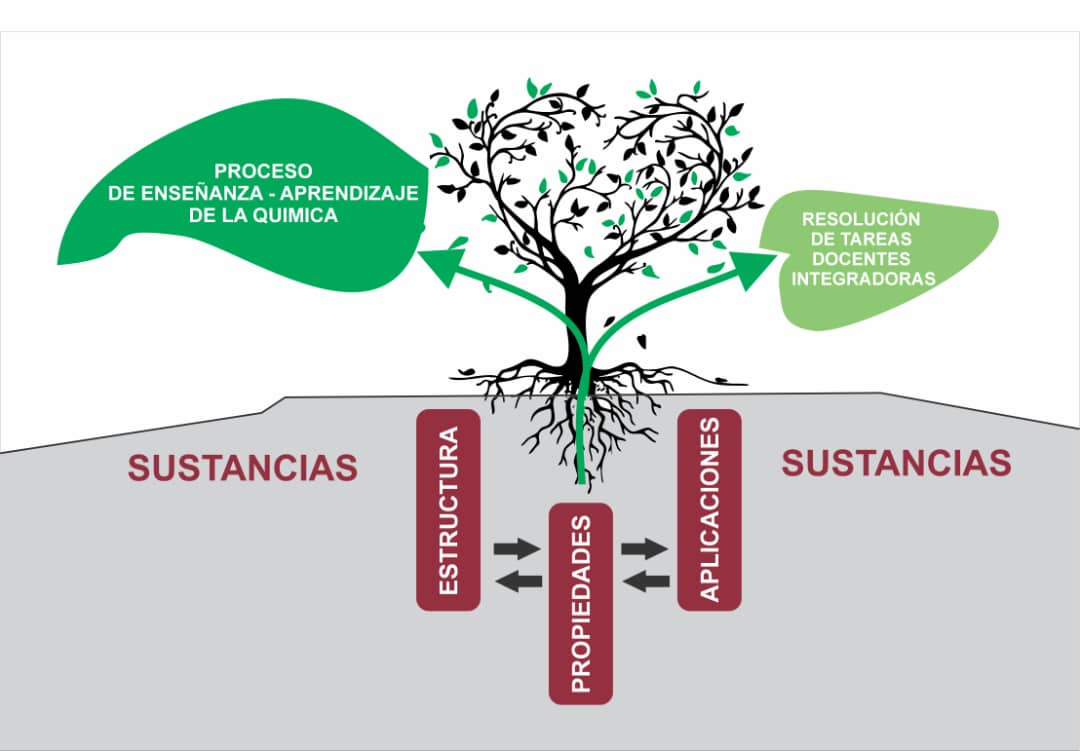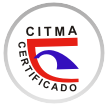EXPERIMENTAL PROCEDURE FOR DETERMINING DYNAMIC VISCOSITY USING PROTONIC RELAXATION RATE
Keywords:
dynamic viscosity; proton relaxation rate and hematologyAbstract
This work aims to evaluate the application possibilities of Nuclear Magnetic Resonance in
Hematology, using the spin-spin proton relaxation rate (R2) at 4 MHz and 20 ºC to evaluate the
dynamic viscosity and identify the mathematical dependence between them, which will allow to
propose an experimental procedure for these purposes. Different solutions of glycerin and blood
plasma were evaluated to establish the mathematical relationship between viscosity and relaxation
rate, finding a linear dependence between both. It was shown that it is essential to build the
calibrations used in plasma samples, to appropriately take into account the fraction of water bound
to proteins, a parameter that determines the relationship between the magnitudes studied. In
addition, an experimental procedure is achieved that sets the guidelines for the application of the
method in patients affected by multiple myeloma and sickle cell anemia.
References
ROSENCRANZ, R.; STEVEN, A. “Clinical
Laboratory Measurement of Serum”. Plasma and
Blood Viscosity. 2006. 125 (Suppl 1): S78-S86. DOI:
https://doi.org/10.1309/FFF7U8RRPK26VAPY
BLANCO SANTOS, Y. et al. “Síndrome de
hiperviscosidad: características fisiopatológicas y clínicas”.
Revista 16 de abril. 2020. 59, 278 . ISSN 1729-6935
AJAYI, O. I.; FAMODU, A. A.; OVIASU, E.
“Fibrinogen concentration: A marker of
cardiovascular disorders in Nigerians”. Turkish
Journal of haematology. 2007. 24(1), 18-22, ISSN:
-7777 url:
https://api.semanticscholar.org/CorpusID:37112719
International Committee for Standardization in
Haematology “Recommendation for a selected
method for the measurement of plasma viscosity”.
Journal of clinical pathology, 1984. 37(10), 1147-
https://doi.org/10.1136/jcp.37.10.1147
LORES, M. A. et al. “Plasma Dynamic Viscosity
Determined by NMR”. Applied Magnetic Resonance.
49(10), 1075-1083, DOI
https://doi.org/10.1007/s00723-018-1026
ENDRE, Z. H.; KUCHEL, P. W. “Viscosity of
concentrated solutions and of human erythrocyte
cytoplasm determined from NMR measurement of
molecular correlation times. The dependence of
viscosity on cell volume”. Biophys chem. 1986, 24,
-356. doi: https://doi.org/10.1016/0301-
(86)85039-6
KUCUKAL, E. et al. “Whole blood viscosity and
red blood cell adhesion: Potential biomarkers for
targeted and curative therapies in sickle cell disease”.
Am J Hematol. 2020 Nov; 95(11): 1246-1256. doi:
https://doi.org/10.1002/ajh.25933. Epub 2020 Aug 10.
COOKE, B. M.; STUART, J. “Automated
measurement of plasma viscosity by capillary
viscometer”. J Clin Pathol. 1988, 41(11): 1213-1216.
doi: https://doi.org/10.1136/jcp.41.11.1213
MENGANA-TORRES, Y. et al. “Determination of
Dynamic Viscosity in Samples of Blood Plasma and
Hemoglobin Solution Using Nuclear Magnetic
Resonance”. International Journal of Biochemistry,
Biophysics & Molecular Biology. 2019, 4(2):25-30.
ISSN: 2575-5889 (Print); ISSN: 2575-5862 (online).
MENGANA TORRES, Y. et al. “Dynamic
Viscosity of Blood Serum Determined Using Proton
Magnetic Relaxation”. Appl Magn Reson. 2024. 55,
-536 https://doi.org/10.1007/s00723-024-01644-0
MENGANA-TORRES, L. Y.; FERNÁNDEZGARCÍA, D. A. “Influencia del hematocrito en el
tiempo de relajación de eritrocitos y soluciones de
hemoglobinas”. Revista Cubana de Química. 2015.
(3) 215-223 ISSN: 2224-5421
SILVA FERNÁNDEZ, R. Estadística general. T.
III. Editorial: Editorial Pueblo y Educación Publicado:
-06-30. ISBN: 978-959-13-0986-0.
SINGHAL, S.; MEHTA, J. “Multiple mieloma”. Clin
J Am Soc Nephrol. 2006 Nov;1(6):1322-1330. doi:
https://doi.org/10.2215/CJN.03060906. Epub 2006
Oct 11. PMID: 17699365.
CARR, H. Y.; PURCELL, E. M. “Effects of
Diffusion on Free Precession in Nuclear Magnetic
Resonance Experiments” Physical Review. 94(3),
May 1, 1954, pp. 630- 638.
https://doi.org/10.1103/PhysRev.94.630
LORES-GUEVARA, M. A. Aplicaciones Médicas
de la Relajación Magnética Nuclear. Noviembre 3,
; Ediciones Universidad de Oriente. ISBN: 978-
-207-731-7
BURTIS, C. A.; ASHWOOD, E. R.; BRUNS, D.
E. (eds): Tietz Textbook of Clinical Chemistry and
Molecular Diagnosis (5th edition) Elsevier, St. Louis,
USA, 2012, 2238 pp, ISBN: 978-1-4160-6164-9.
MENON, R. S.; ALLEN, P. S. “Solvent proton
relaxation of aqueous solutions of the serum proteins
alpha 2-macroglobulin, fibrinogen, and albumin”.
Biophys J. 1990 Mar;57(3):389-396. doi:
https://doi.org/10.1016/S0006-3495(90)82555-8.
PMID: 1689591; PMCID: PMC1280733.
LORES, M.; CABAL, C. “Proton magnetic
relaxation process during the polymerization of
hemoglobin S.” Appl. Magn. Reson. 2005. 28, 79-84
https://doi.org/10.1007/BF03166995
FRIEDMAN R.; YOUNG, D. Effects of disease of
Clinical Laboratory test. 2001. 4th Edition, vol. 1 and
D.S. Washington, DC: AACC Press, ISBN 1-
-45-X.
LEE, D. H.; JUNG, J. M.; KIM, S. Y.; KIM, K.
T.;CHO, Y. I. “Comparison tests for plasma viscosity
measurements”. International Communications in Heat
and Mass. Transfer. 2012. 39(10), 1474-1477. ISSN:
-1933. Doi:
https://doi.org/10.1016/j.icheatmasstransfer.2012.10.018
TOĞRUL, H.; ARSLAN, N. “Mathematical
model for prediction of apparent viscosity of
molasses”. Journal of Food Engineering, 2004, 62(3),
-289, ISSN 0260-8774,
https://doi.org/10.1016/S0260-8774(03)00241-3
HUAMANÍ, C. et al. “Prediction of Blood
Viscosity Based on Usual Hematological Parameters
in a Clinically Healthy Population Living in a HighAltitude City”. High Alt Med Biol. 2022; 23(1):78-84.
doi: https://doi.org/10.1089/ham.2021.0165. Epub
Mar 10. PMID: 35271375.

Downloads
Published
How to Cite
Issue
Section
License
Copyright (c) 2025 Yulianela Mengana-Torres, Manuel A. Lores-Guevara, Yamilka Alonso-Geli, Lidia C. Suárez-Beyries, Norberto Rodríguez-Suárez

This work is licensed under a Creative Commons Attribution-NonCommercial-NoDerivatives 4.0 International License.
This journal provides immediate open access to its content, based on the principle that offering the public free access to research helps a greater global exchange of knowledge. Each author is responsible for the content of each of their articles.






















